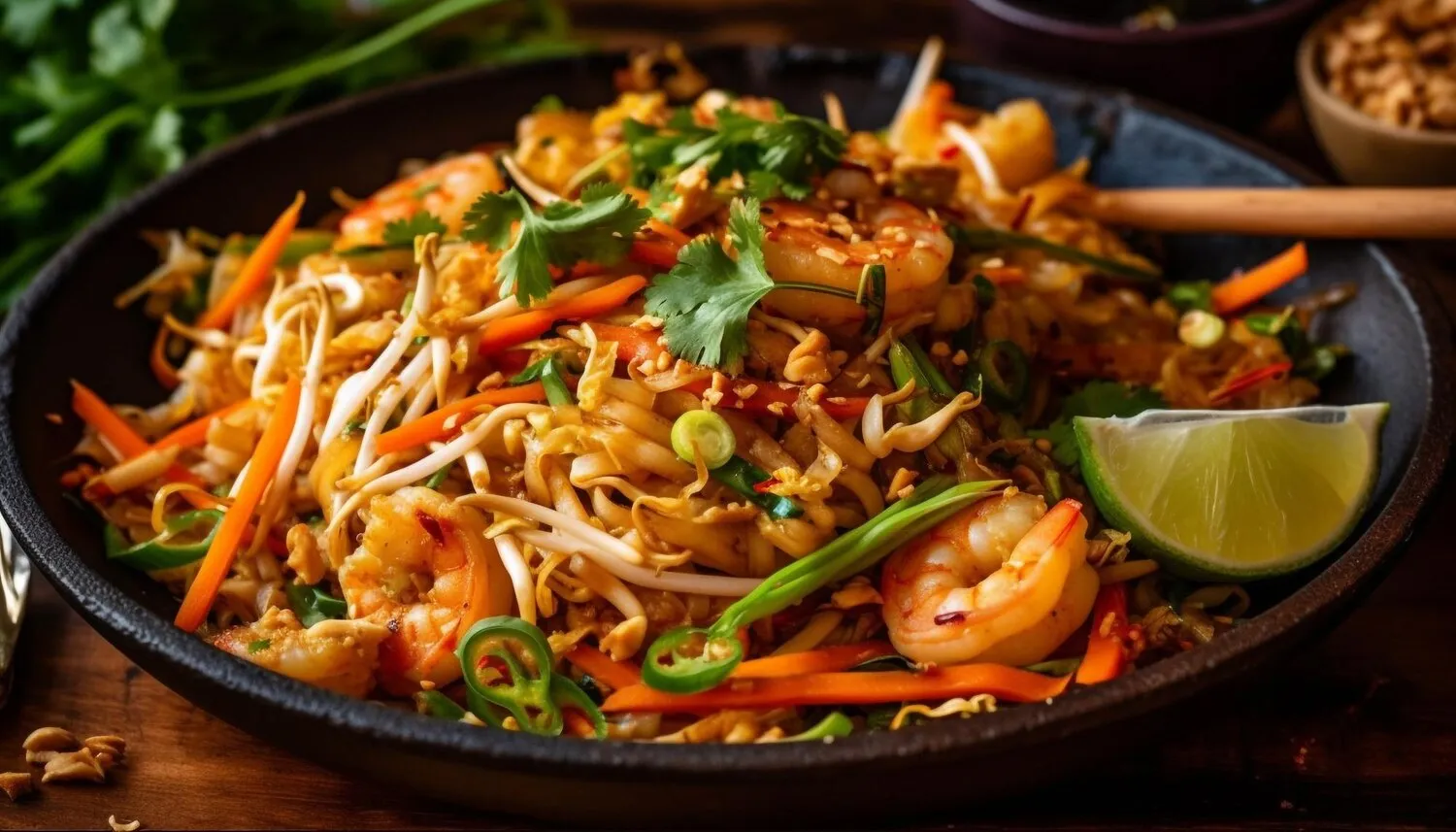
Biang Biang Noodles
Wide, hand-pulled noodles with a complex and unique character often mentioned in reviews. The name itself is famous due to its complex Chinese character.
Nutrition Facts
* The % Daily Value (DV) tells you how much a nutrient in a serving of food contributes to a daily diet. 2,000 calories a day is used for general nutrition advice.
Biang Biang noodles originate from the Shaanxi province of China, a region known for its wheat-based cuisine. The exact origins are shrouded in local legends and folklore, with various stories attributing the dish's creation to a poor scholar, a noodle shop owner, or even a mythical figure. The noodles have been a staple food in Shaanxi for generations, passed down through families and local eateries.
Biang Biang noodles hold significant cultural importance in Shaanxi province and beyond. The dish represents the region's culinary heritage and ingenuity. Its unique name and complex character symbolize the rich and diverse culture of Shaanxi.
The Character
The Chinese character for 'Biang' is one of the most complex and arguably one of the hardest to write, consisting of 57-62 strokes depending on the variation used. Its complexity adds to the dish's mystique and cultural significance.
Local Pride
Biang Biang noodles are a source of pride for the people of Shaanxi, and are often featured in regional cuisine showcases and celebrations. It's a dish that embodies the spirit and flavors of the region.
Noodle Pulling Art
The process of hand-pulling the noodles is considered an art form, requiring skill and precision to achieve the desired thickness and texture. This craftsmanship contributes to the cultural value of the dish.
Biang Biang noodles are characterized by a robust and savory flavor profile, featuring a balance of spiciness, tanginess, and umami. The dish is typically rich and satisfying.
The flavor base comes from a combination of ingredients such as chili oil, soy sauce, vinegar (often Chinkiang vinegar for its dark and malty notes), garlic, and scallions. Ground meat (usually pork or beef) is often added, contributing a meaty umami depth. Vegetables like bok choy or bean sprouts provide a fresh and crunchy contrast. The hand-pulled noodles themselves, due to their thickness and irregular texture, absorb the sauce exceptionally well, resulting in a flavorful and fulfilling experience.
Dough Preparation
The dough should be properly kneaded and rested to allow the gluten to develop, resulting in a more elastic and easier-to-pull noodle. Aim for a smooth and pliable dough.
Noodle Pulling Technique
Practice the pulling technique to achieve the characteristic wide and uneven shape of the noodles. Gently stretching and slapping the noodles against the counter helps to elongate and flatten them.
Sauce Balance
Adjust the amount of chili oil, vinegar, and soy sauce to your taste. The key is to find a balance that complements the noodles without overpowering them.
Fresh Ingredients
Using high-quality, fresh ingredients will greatly enhance the flavor of the dish. Don't skimp on the garlic, scallions, and chili oil.
Explore additional Noodles dishes and restaurants
Explore NoodlesDiscover top dining spots and culinary experiences in Galway.
Explore GalwayLearn more about the food culture, restaurant scene, and culinary heritage of Ireland.
Explore Ireland